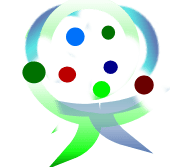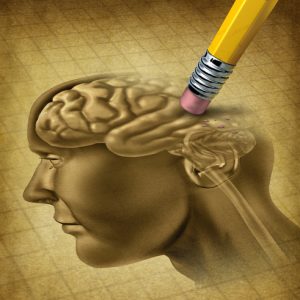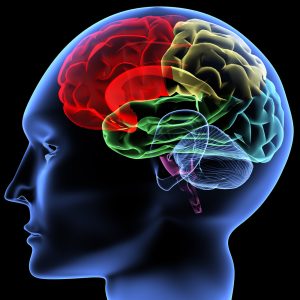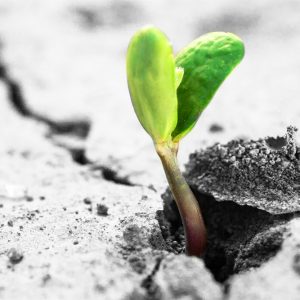
An Opinion on Medicine
Modern medicine
versus
any other approach to heal
“Even science is originally based on a belief,
a belief that something exists that can not yet be touched or seen, but simply
that there is a possibility of its existence”
Preset:
Modern medicine
is the scientific approach of diagnosing, treating, or preventing
disease and other damage to the body or mind. Compared to any other medical
system, modern medicine does not approach each human individually and
treatments are mostly symptom-focused.
Traditional Chinese medicine (TCM)
is an ancient and still very vital holistic system of health and
healing, based on the notion of harmony and balance, and employing the ideas of
moderation and prevention. TCM is a complete system of health care with its own
unique theories of anatomy, health, and treatment. It emphasizes diet and
prevention and using acupuncture, herbal medicine, massage, and exercise; and
focuses on stimulating the body’s natural curative powers.
Homeopathy
is a system of therapeutics based on the theory that “like cures
like.” It is believed that a large amount of a particular drug may cause
symptoms of a disease whereas moderate dosage may reduce those symptoms; thus
some disease symptoms may be treated by very small doses of medicine. In
practice, homeopathists dilute drugs with milk sugar in ratios of 1 to 10 to
achieve the smallest dose of a drug that seems necessary to control the
symptoms in a patient and prescribe only one medication at a time
Complementary and alternative medicine (CAM)
is a large and diverse set of systems of diagnosis, treatment, and
prevention based on philosophies and techniques other than those used in
conventional, modern medicine, often derived from traditions of medical
the practice used in other (non-Western) cultures. Such practices may be described
as alternative, that is, existing as a body separate from and as a replacement
for conventional Western medicine, or complementary, that is, used in addition
to conventional Western practice. CAM is characterized by its focus on the
whole person as a unique individual, on the energy of the body and its
influence on health and disease, on the healing power of nature and the
mobilization of the body’s resources to heal itself, and on the treatment of
the underlying causes, rather than symptoms, of disease. Many of the techniques
used are the subject of controversy and have not been validated by controlled
studies.
Each of the following practices is considered complete or supplementary
medical systems but are found mainly in the CAM group as the approach and controversy are similar. Each may have derivates that are not mentioned here:
Anthroposophic medicine
Ayurveda
Chiropractic
Native American medicine
Naturopathy
Osteopathy
Reiki
Shamanism
Traditional Tibetan medicine
I. Introduction
A quote from James C. Whorton`s Oxford Essay “Nature Cures”:
„Why to be sure, If we by Fancy’s aid can cure; Then why not use Imagination, A cheap and simple operation?“
Why not? Because imagination is all in the mind, a nebulous and unpredictable entity instead of a physical agent explainable by the laws of chemistry and physics that govern other therapies.
The concept of CAM, TCM, and Homeopathy or other traditional medical systems is problematic
as it cannot exist autonomously as an object of study in its own right but must
always be defined in relation to a non-static and transient medical orthodoxy.
It also divides medicine into two realms, a medical mainstream, modern medicine,
and fringe, or about any other medical system, which, in privileging orthodoxy,
presents difficulties in constructing a historical analysis independent of the
often biased and polemical views of regular modern medical practitioners.
The description of non-conventional medicine as an alternative reinforces
both its marginality and the centrality of modern medicine. Although more
neutral than either pejorative or promotional designations such as “quackery”
or “natural medicine”, related terms like “unconventional”, “heterodox”,
“unofficial”, “irregular”, “folk”, “popular”,
“marginal”, “complementary”, “integrative” or “unorthodox” define
their object against the standard of modern medicine, entail particular
perspectives and judgments, often carry moral overtones and can be
inaccurate.
Modern medical practitioners in the West have, since the nineteenth
century, used some of these and similar terms as a means of defining the
the boundary of “legitimate” medicine, marking the division between that
which is scientific and that which is not.
The definition of modern medicine is generally understood to refer to a
system of licensed medicine that enjoys state and legal protection in a
jurisdiction is also highly specific to time and place. In countries such as India and China traditional systems of medicine, in conjunction with Western modern medicine and science, may be
considered conventional and mainstream.
The shifting nature of these terms is underlined by recent efforts to
demarcate between alternative treatments based on efficacy and safety
and to amalgamate those therapies with scientifically adjudged value into
complementary medicine as a pluralistic adjunct to conventional practice. This
would introduce a new line of division based upon medical validity.
I.I. The problem of modern medicine with traditional medical systems
Alternative medical systems….
- treatments are widely unapproved
- are based simply on a belief
- denounces modern medicine
- has no control system for remedies or practitioners
- use funds originally used for science science-based
- have no evidence of its effect
- have dangerous side effects if modern medicine is abandoned completely
I.I.I. The problem of traditional medical systems with modern medicine
Modern medicine….
- treats symptoms only
- is not prevention-oriented
- does not educate
- leaves the patient being a passive recipient
- does not focus on health
- treats through general classification, one cure, cures all
- focuses on profit, not the patient
- is accused of biopiracy denounces herbal medicine in general but uses plants to extract
plant substances or genetic cell lines to produce medicine, without fair compensation,
even claiming patents on plathathich have been used for healing in
natural and herbal medicine for centuries - acts as a counter-agent with side effects, chemicals, surgery options and
replacement - is mechanical, analytical and bio-physical
V.I. The problem of the patient with modern medicine and practitioners
Modern medicine and practitioner….
- treats symptoms only
- are ppprofitriented
- support an inhumane health system
- are in distrust because of too many scandals
- prescribe medications unnecessarily and often with heavy side effects
- do not focus on health
- can not exist without enough patients
II Short history of alternative medicine to integrative medicine
Natural-based medicine is as old as humanity. Herbs, plants, roots,
fruits, insects, animal parts have always been used to heal, strengthen,
prevent and protect.
With the furtherance of evolution and growing awareness of the human as
being, the existence of a soul, spirits, or higher being, connected to the earth,
the universe, and a creator; the introduction of gods, cults, religions was a
the consequence which became strongly connected to natural based medicine.
Many cultures, such as the American Indian used shamanism which is a
practice that involves a practitioner reaching altered states of consciousness
to encounter and interact with the spirit world and channel these
transcendental energies into this world. So did the Turks and Mongols and many
other cultures around the world. Shamanism was not only used to reach
divination but especially for healing through energies.
Shamanism is partly considered a pre-religious cult as some rites
survived throughout the centuries, while Shamanism became more and more
repressed mostly by the Christianization of the world.
Also, Ayurveda has an over 4000-year history and has seen a strong come
back in the late 20th Century.
Religion embraced some rites of several cultures while rejecting most of
the culture healing abilities and centered all healing power in the belief in
god and the cultivation of orthodox medicine, which was more science-based but
also used natural remedies to produce medicine.
In the Eastern hemisphere, the development was contrary to the western
world and is today still. TCM or
traditional Chinese medicine has an over 2000 year history and is based on a
a broad range of medicine practices including various forms of herbal medicine,
acupuncture, massage (Tui na), exercise (qigong), and dietary therapy.
While modern Chinese medicine reached stronger recognition and
importance threw the centuries, TCM was not abandoned but rather integrated
into modern Chinese medicine and has remained to be a vital part of the medical-
and prevention system.
During the centuries and the increasing violence of wars with an equallyWith
a growing number of casualties and fatalities the science of medicine became more
and more relevant and repressed natural, herbal, and alternative healing
methods. Some healing systems were even put under restrain of illegality.
In the late 18th century homeopathy was created
by Samuel Hahnemann and the Simile-Principle was introduced and found great
popularity in the 19th century, but was also faced with hash
skepticism in the 20th century when science was able to prove that
in the heavy dilutions, there was no molecule of the original substance left.
Nonetheless in the 20th20th-centuryeopathy became very
popular again and remains so until today.
While Hahnemann created homeopathy, medicine was still relying on blood
letting and medicine which consisted mainly of plant remedies, animal parts,
opium and other ingredients which caused often allergic reactions or had other heavy
side effects.
While medicine based on scientific evidence became a more central part
of the healing of diseases in the cities, the population outside the city
vicinity continued using herbal and natural medicine throughout the centuries.
Also was the access to medicine impossible to most as it was either
unaffordable or unreachable. Also, the level of education played a major role
in who received medicine and who did not. There was no medical or social insurance
system in place.
Throughout the centuries TCM or any other alternative medical system were
either unknown or considered exotic in the western world. It was in the 20th
the century that many Asian or Eastern medical systems found their way to Europe,
while in the US, they were known a century earlier through immigrants from Asia.
Reiki, Ayurveda, traditional Tibetan medicine also surfaced on the European
continent.
During all the centuries, throughout the world, many healing methods
surfaced that were simply based on the imaginary skills of its inventors that
was supposed to gain the inventor reputation and money, but can indeed be
considered “Quackery”.
These inventions exist today as well and will be available in the
future too.
This fact has not helped any alternative medical system to gain more
trust or a better reputation. But any medical system has to battle a similar
fight against profit maximization and deception.
In the later 20th century, integrative medicine has emerged
as a potential solution to the American and other countries’ healthcare crises. It provides
care that is patient-centered, healing-oriented, emphasizes the therapeutic
relationship, and uses therapeutic approaches originating from conventional and
alternative medicine. Initially driven by consumer demand, the attention
integrative medicine places on understanding whole persons and assisting with
lifestyle change is now being recognized as a strategy to address the epidemic
of chronic diseases bankrupting our economy. This essay defines integrative medicine and its principles, describes the history of complementary and alternative medicine (CAM)
in healthcare, and discusses the current state and desired future of the integrative
medical practice. The importance of patient-centered care, patient
empowerment, behavior change, continuity of care, outcomes research, and the
challenges to successful integration are discussed.
III Integrative medicine
A quote from Robert S. Mendelsohn, M.D.
“I no longer believe in Modern Medicine. I believe that despite all the
super technology and elite bedside manner that’s supposed to make you feel
about as well cared for as an astronaut on the way to the moon, the greatest
danger to your health is the doctor who practices Modern Medicine.”
In the past several decades there was a change in the medical landscape
from the solo practice, primary care country doctor to large urbanized health
care systems, from high-touch, low-cost care to high-tech, specialized and
expensive, sometimes impersonal health care. Some patients feel lost in their
current health care system. They see specialist after specialist and receive
prescription after prescription and test after test. They wonder whether their
specialists speak to each other.
In the context of these historical and social changes, a field of
unconventional medicine has evolved and is now integrative medicine. It is hoped
that the perspectives offered by integrative medicine will eventually transform
mainstream medicine by improving patient outcomes, reducing costs, improving
safety, and increasing patient satisfaction.
Integrative medicine, also referred to as integrated medicine, is the
combination of practices and methods of alternative medicine with conventional
modern medicine. Dr. Andrew Weil of the University of Arizona
defines IM as such: We see integrative medicine as healing-oriented medicine
that takes account of the whole person, including all aspects of lifestyle. It
emphasizes the therapeutic relationship between practitioner and patient, is
informed by evidence, and makes use of all appropriate therapies.
It emphasizes a focus on wellness and health rather than treating
disease and the patient-physician relationship.
This approach began in the 1990s and many medical schools in the world
now include integrative medicine in their curriculum. Beginning in 2014 U.S.
physicians will be able to be accredited in integrative medicine.
III.I Holistic medicine
Holistic medicine as seen today:
Holistic medicine is a form of healing that
considers the whole person, body, mind, spirit, and emotions, in the quest for
optimal health and wellness. According to the holistic medicine philosophy, one
can achieve optimal health, the primary goal of holistic medicine practice, by
gaining proper balance in life.
Holistic medicine practitioners believe that
the whole person is made up of interdependent parts and if one part is not
working properly, all the other parts will be affected. In this way, if people
have imbalances (physical, emotional, or spiritual) in their lives, it can
negatively affect their overall health.
A holistic doctor may use all forms of health
care, from conventional medication to alternative therapies, to treat a
patient. For example, when a person suffering from migraine headaches pays a
visit to a holistic doctor, instead of walking out solely with medications, the
doctor will likely take a look at all the potential factors that may be causing
the person’s headaches, such as other health problems, diet and sleep habits,
stress and personal problems, and preferred spiritual practices. The treatment
plan may involve drugs to relieve symptoms, but also lifestyle modifications to
help prevent the headaches from recurring.
Holistic medicine is also based on the belief
that unconditional love and support is the most powerful healer and a person is
ultimately responsible for his or her own health and well-being. Other
principles of holistic medicine include the following:
• All people have innate healing powers.
• The patient is a person, not a disease.
• Healing takes a team approach involving the patient and doctor and addresses all aspects of a person’s life using a variety of health care practices.
• Treatment involves fixing the cause of the condition, not just alleviating the symptoms.
IV Who uses alternative and integrative medicine
Users of alternative and integrative medicine are likely to be part of a
cultural group, or “cultural creatives,” and identifiable by the
following values: commitment to environmentalism; commitment to feminism;
involvement with esoteric forms of spirituality and personal growth psychology,
self-actualization, and self-expression; and love of the foreign and exotic.
These individuals tend to be at the leading edge of cultural change and
innovation.
While some alternative and integrative medicine techniques are being
approved for coverage by some insurers, most treatments are still not covered
and therefore need private payment. This is often only affordable for
middle-class income and upper-income patients.
The distinction is also that education is an important factor,
considered if a patient will use alternative and integrative medicine.
Some statistics claim that up to 40% of patients have used one or the
other alternative and integrative medicine technique. This number is expected
to grow consistently in the future as the global disillusion in the health care
system is constantly growing as well.
IV.I Why do these groups use alternative and integrative medicine
Along with being more educated and reporting poorer health status, the
majority of alternative medicine users appear to be doing so not so much as a
result of being dissatisfied with conventional medicine but largely because
they find these health care alternatives to be more congruent with their own
values, beliefs, and philosophical orientations toward health and life.
Dissatisfaction: Patients are dissatisfied with conventional treatment because it has been
ineffective, has produced side effects, or is seen as impersonal, too
technologically oriented, and/or too costly.
Need for personal control: Patients seek alternative therapies because they see
them as less authoritarian and more empowering and as offering them more
personal autonomy and control over their health care decisions.
Philosophical congruence: Alternative therapies are attractive because they are
seen as more compatible with patients’ values, worldview, spiritual/religious
philosophy, or beliefs regarding the nature and meaning of health and illness.
Modern medicine practitioners have for the past 2 decades begun to adopt
some alternate techniques to offer a wider array of services to their
patients. These techniques are e.g. acupuncture and massages.
Hospitals and medical universities have recently begun to establish
departments teaching, researching, and practicing alternative medical systems.
Critics say this is simply because state funds are
available for such purposes.
V My approach to integrated medicine
I respect the inventions of modern medicine and the tremendous goals
that have been archived battling many diseases such as Covid-19, HIV, Cancer,
Hepatitis, Diabetes and many, others, while the fight is far from over. Also, has
surgery become safer and less invasive due to constant development.
However that the life expectancy rate is constantly climbing is also due
to modern medicine. And even though life today is safer than it ever
was in any century, I trust that the modernicine has come to a point where
it will have to shift the focus from battling the disease to maintaining health.
I believe that health should be the primary approach to battling
any disease.
I also believe that any human, in general, Iss healthy and that the body is
created to outlive a hundred years and more without a major disease.
I furthermore believe that most diseases are a social medical disease
Social medical diseases are e.g. heart attacks, strokes, diabetes,
cancer, arthritis, mental illnesses, allergies, obesity, ty and respiratory
diseases, like asthma and are all strongly related to our lifestyle, spiritual
orientation and environmental influences
Ultimately I believe that the healthy human body can fight any
disease
As of today neither modern medicine nor the alternative medicine
approaches are solely able to battle and win the fight overall diseases and for
generations to come this will not change, unless humanity approaches new goals,
the conscious mind and spiritual awareness.
Both these goals would change the way we approach life, living, loving,
working and eating. How we treat our mind, soul, and body, fellow humans,
animals, and the environment. All-natural things suddenly make sense and the
interconnections between all life forms become visible and comprehensible.
Life itself would become comprehensible.
Health is the Standard, not disease.
Neither modern nor alternative medicine will ever be dispensable, and
neither needs the fear of extinction, but a reorganization of all medical systems
and shift in values is inevitable and has begun already, but without doing so
hand in hand, or with a common goal.
Integrative medicine has already found its way into hospitals and
universities, but the reach is limited and the focus is still on the education
of practitioners rather than the education of humans.
Education of patients is certainly a vital beginning but the education
needs to start before a child is conceived or given birth to, from the
education of parents and throughout nursery, school, college, and universities
to be effective on a widespread scale.
Not only would the life quality of all humans improve greatly, but also
the patients with diseases would receive far more human treatment,
considering the whole human rather than the treatment of symptoms, for a
healthy life thereafter.
By focusing on health and maintaining health the medical system would
reduce spending by several billion every year. These funds could be used for
the research of science-based and alternative healing practices, palliative care, and on
patients that need sufficient care without the financial background.
The social systems would be revitalized and be able to support people in need.
The process is a long one, with many controversial discussions, paired with great advances and setbacks,
the elimination of presets, prejudice, and practices, but the prospect of a
world and life that is worth living and living on…….no matter for how long!
Let`s Talk about it!
Namaste
Armaan




